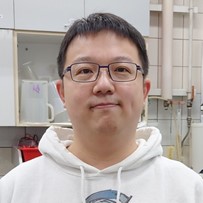Roles of p53 Family in Cancers and Their Therapeutic Approaches
A special issue of Biomedicines (ISSN 2227-9059). This special issue belongs to the section "Molecular and Translational Medicine".
Deadline for manuscript submissions: 31 October 2024 | Viewed by 1722
Special Issue Editors
Interests: p53 family; tumor suppressor gene; stem cell and cancer stem cell; missense mutation and nonsense mutation; drug resistance in cancer; immunotherapy; dermatology; head and neck cancer
Special Issue Information
Dear Colleagues,
Throughout history, Chinese philosophers have used the concept “Yin” and “Yang” to describe inseparable opposites. The Yin represents dark or negative imagery, while the Yang represents light or positive imagery. The p53 family has the following three members: p53, p63 and p73. In cancer cells, the wild types of p53 or TA isoforms of p63 and p73 are described as the “Yin” and are used to block cancer progression. Most of the mutations of p53 or shorten isoforms of p53 family members (Δ133p53 and Δ160p53, ΔNp63 and ΔNp73) are described as the “Yang” and are used to promote cancer progression. The identification of the ways in which we can target mutant p53 or activate either p63 or p73 is purpose of cancer therapy. The Special Issue seeks to collect manuscripts (original research or reviews) on all p53 family members to study the “Yin”or “Yang” roles of p53 or p63 or p73 in cancers.
Dr. Bi-He Cai
Dr. I-Lun Hsin
Guest Editors
Manuscript Submission Information
Manuscripts should be submitted online at www.mdpi.com by registering and logging in to this website. Once you are registered, click here to go to the submission form. Manuscripts can be submitted until the deadline. All submissions that pass pre-check are peer-reviewed. Accepted papers will be published continuously in the journal (as soon as accepted) and will be listed together on the special issue website. Research articles, review articles as well as short communications are invited. For planned papers, a title and short abstract (about 100 words) can be sent to the Editorial Office for announcement on this website.
Submitted manuscripts should not have been published previously, nor be under consideration for publication elsewhere (except conference proceedings papers). All manuscripts are thoroughly refereed through a single-blind peer-review process. A guide for authors and other relevant information for submission of manuscripts is available on the Instructions for Authors page. Biomedicines is an international peer-reviewed open access monthly journal published by MDPI.
Please visit the Instructions for Authors page before submitting a manuscript. The Article Processing Charge (APC) for publication in this open access journal is 2600 CHF (Swiss Francs). Submitted papers should be well formatted and use good English. Authors may use MDPI's English editing service prior to publication or during author revisions.
Keywords
- p53
- p63
- p73
- tumor suppressor gene
- isoforms
- loss-of-function mutation
- gain-of-function mutation
- cell cycle
- apoptosis
- oncology







